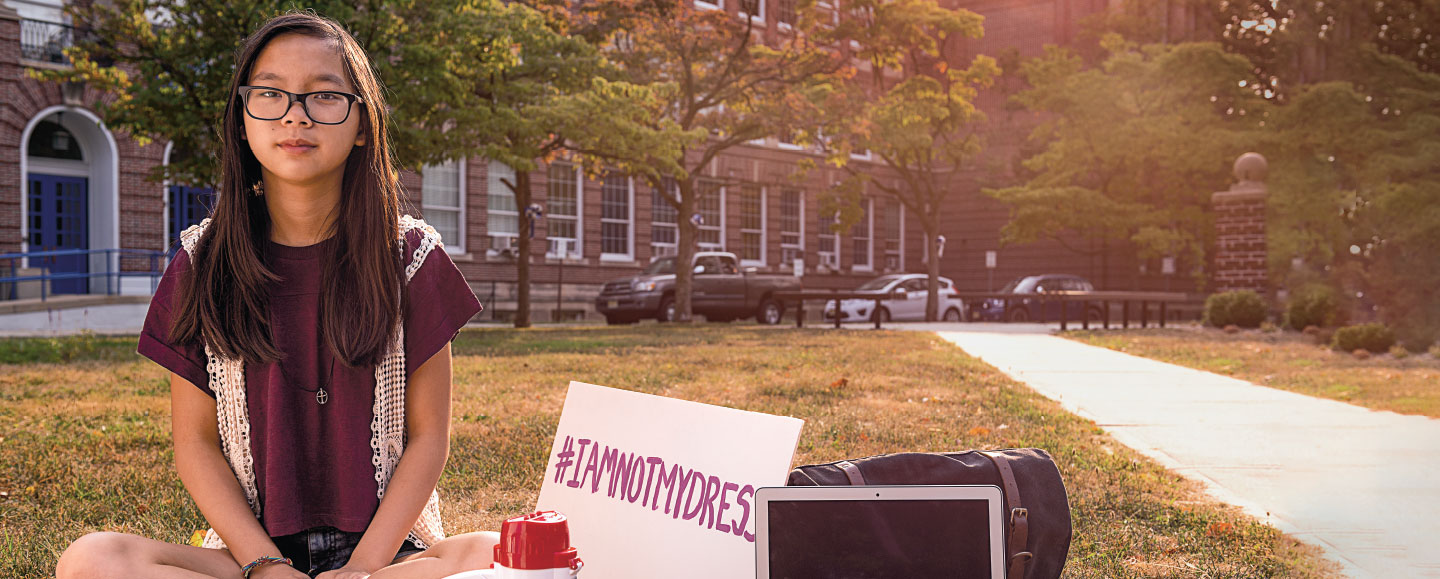Barbara Dunne never had a problem with her high school’s dress code. She’d followed similar guidelines for years. No big deal.
Last spring, though, Barbara—then 14 and a freshman at Montclair High School in New Jersey—noticed something that bugged her. Girls at her school got punished for violating the code much more often than boys did— and were sometimes called out publicly for infractions. Some girls were forced to stand up in class so their shorts could be measured to ensure they met the required length.
“At first it was just a few people, then it escalated,” says Barbara, who was never punished for an infraction herself. “The way the policy was being carried out didn’t seem fair.” Concerned about the pattern, she soon found herself in an online chat with other girls from her school, venting about the code.

